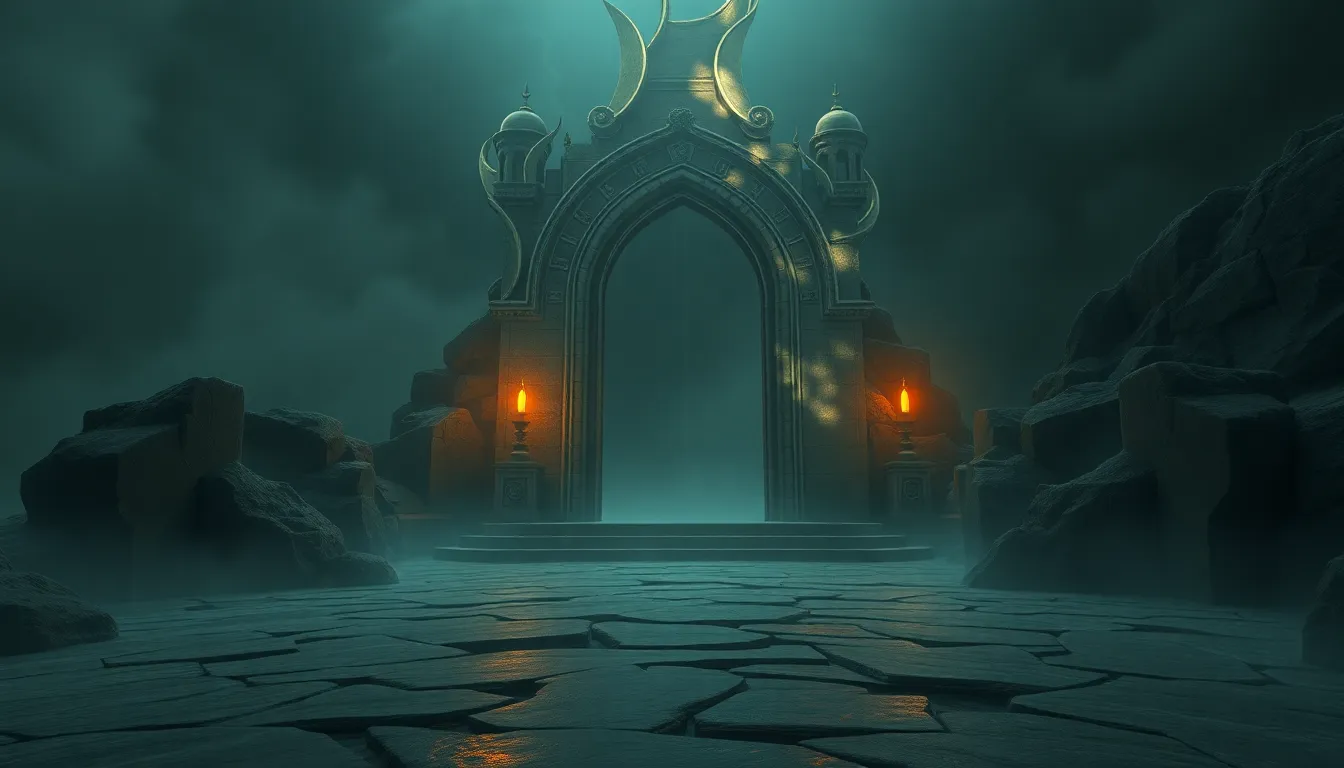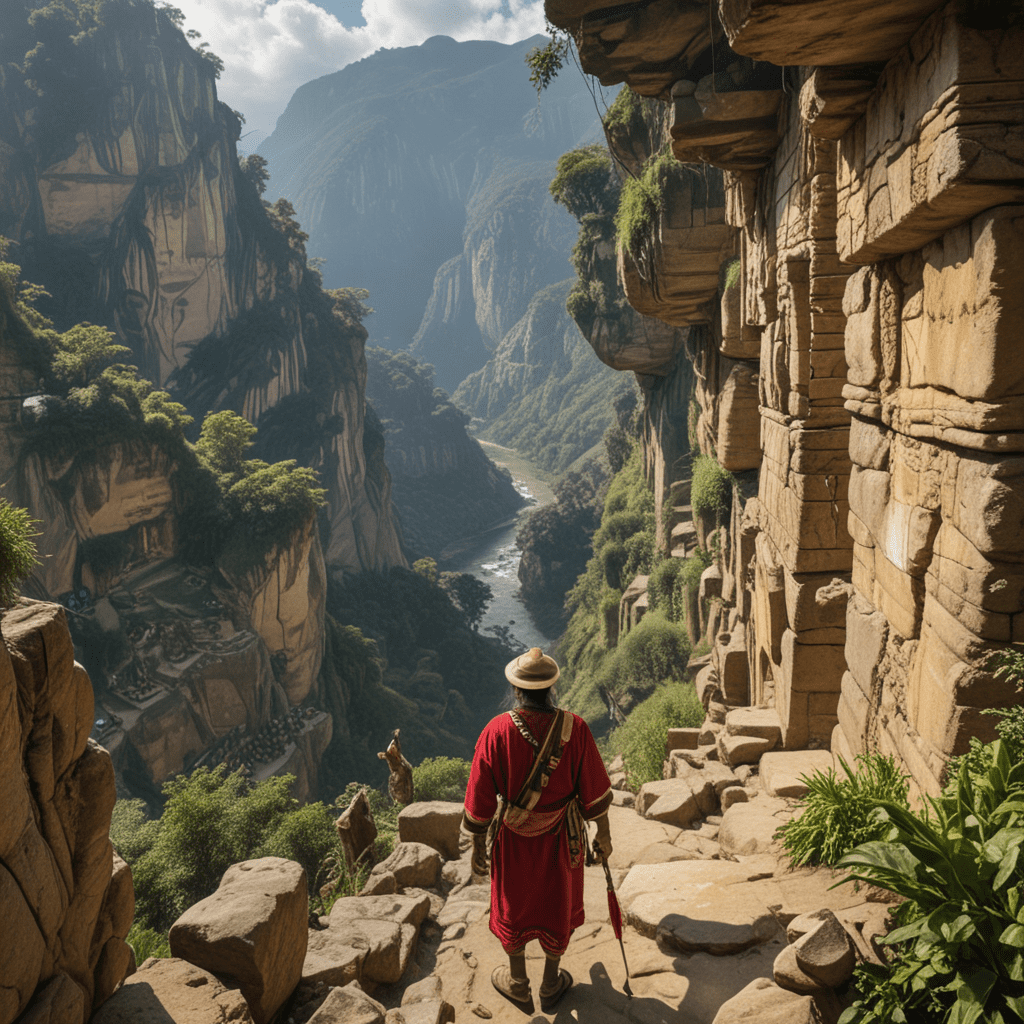The Divine Threshold: Sacred Entrances to Mythical Worlds
I. Introduction
Throughout human history, sacred entrances have served as the gateways to mythical worlds, bridging the gap between the physical and the divine. These entrances, whether tangible or symbolic, have played a significant role in numerous cultures, marking the junctures where the human experience meets the transcendent.
Mythical worlds are not merely figments of imagination; they are essential components of the cultural fabric that shapes beliefs, traditions, and spiritual practices. From the ancient Greeks to contemporary spiritual seekers, these worlds offer insights into existence, morality, and the cosmos. This article aims to explore the concept of sacred entrances, their historical context, types, significance in mythology, cultural variations, and their relevance in modern spirituality.
II. Historical Context of Sacred Entrances
A. Overview of Ancient Cultures and Their Beliefs
Many ancient cultures viewed certain locations as sacred, believing they were imbued with divine presence. The Egyptians honored entrances to their temples as portals to the afterlife, while the Maya revered specific caves as gateways to the underworld. Such beliefs highlight the deep connection between the physical realm and spiritual dimensions.
B. Sacred Spaces in Archaeology: Temples, Altars, and Portals
Archaeological findings reveal that sacred spaces often included elaborate entrances that served both practical and ceremonial purposes. Temples, altars, and portals were designed to guide individuals into realms of higher consciousness and divine interaction. For instance, the grand entrance of the Temple of Karnak in Egypt was adorned with intricate carvings that depicted the journey to the divine.
C. Evolution of Sacred Entrances Through Time
As societies evolved, so did their interpretations and constructions of sacred entrances. From the monumental stone gates of ancient civilizations to the minimalist designs of modern spiritual retreats, sacred entrances have adapted to reflect changing beliefs and practices.
III. Types of Sacred Entrances
A. Physical Entrances: Gates, Doorways, and Archways
Physical entrances are the most recognizable forms of sacred portals. They include:
- Gates: Often monumental, symbolizing the transition to a sacred space.
- Doorways: Found in homes and temples, representing personal and communal thresholds.
- Archways: Architectural features that signify the passage into a different realm.
B. Symbolic Entrances: Rituals and Ceremonies
Symbolic entrances transcend physicality, often represented through rituals and ceremonies that mark significant transitions. These practices allow individuals to experience a transformation and connect with the divine.
C. Natural Entrances: Caves, Mountains, and Rivers
Nature also provides sacred entrances. Caves often symbolize the womb of the earth, mountains represent spiritual ascension, and rivers are seen as conduits between worlds. Many indigenous cultures regard these natural formations as sacred pathways to the spirit realm.
IV. Sacred Entrances in Mythology
A. Greek Mythology: The Underworld and the River Styx
In Greek mythology, the River Styx serves as a critical entrance to the underworld. Souls had to cross this river to enter Hades, often depicted as a daunting threshold symbolizing death and the afterlife.
B. Norse Mythology: Yggdrasil and the Nine Realms
The World Tree, Yggdrasil, is central to Norse cosmology, connecting nine realms. Its roots and branches symbolize sacred entrances to various worlds, illustrating the interconnectedness of all existence.
C. Hindu Mythology: The Cosmic Ocean and the Gates of Heaven
In Hindu cosmology, the cosmic ocean is viewed as a sacred threshold. The gates of heaven, often represented in temples, signify the transition from earthly existence to divine realms, illustrating the journey of the soul toward enlightenment.
V. Cultural Variations of Sacred Entrances
A. Indigenous Cultures: Sacred Sites and Spiritual Pathways
Indigenous cultures often revere specific sites as sacred entrances, recognizing the land’s spiritual significance. These sites may include mountains, rivers, and ancient trees, which serve as conduits for spiritual connection.
B. Eastern vs. Western Perspectives on Entrances to the Divine
Eastern philosophies often emphasize the inner journey and meditative practices as sacred entrances, while Western traditions may focus on physical locations and communal worship. These differing perspectives reflect broader cultural attitudes toward spirituality and existence.
C. Contemporary Interpretations in Modern Spirituality
In modern spirituality, sacred entrances have taken on new forms, including wellness retreats and digital spaces. These contemporary interpretations facilitate personal transformations and spiritual exploration.
VI. The Role of Rituals and Ceremonies
A. Initiation Rites and Their Connections to Sacred Entrances
Initiation rites often involve sacred entrances, marking the transition from one life stage to another. These rituals serve as profound moments of transformation, guiding individuals toward spiritual awakening.
B. Pilgrimages: Journeys to Mythical Worlds
Pilgrimages represent physical journeys to sacred sites, often regarded as the ultimate sacred entrance. These journeys connect individuals to their cultural heritage and the divine, fostering a sense of belonging and purpose.
C. Offerings and Their Significance at Sacred Sites
Offerings made at sacred entrances signify respect and reverence. They serve as a form of communication with the divine, reinforcing the connection between the physical and spiritual realms.
VII. Psychological and Spiritual Implications
A. The Concept of Thresholds in Human Psychology
The concept of thresholds resonates deeply in human psychology, representing moments of change and transformation. Sacred entrances symbolize these crucial junctures, where individuals confront their fears and aspirations.
B. Transformational Experiences Associated with Sacred Entrances
Many individuals report profound experiences at sacred entrances, often describing feelings of enlightenment, healing, or connection to the universe. These experiences can catalyze personal growth and spiritual development.
C. The Intersection of Myth and Personal Spiritual Journeys
Myths often guide personal spiritual journeys, offering archetypal narratives that resonate with individual experiences. Sacred entrances serve as tangible representations of these narratives, inviting individuals to explore their own paths.
VIII. Modern-Day Sacred Entrances
A. Contemporary Spiritual Retreats and Their Symbolic Entrances
Modern spiritual retreats often feature symbolic entrances that invite participants to leave behind the mundane and enter a space of reflection and healing. These retreats create environments conducive to personal transformation.
B. The Revival of Ancient Practices in Today’s World
Many ancient practices are experiencing a revival, with individuals seeking to reconnect with sacred traditions. These practices often involve rituals centered around sacred entrances, fostering a sense of community and spirituality.
C. Digital Entrances: Virtual Realities and Mythical Experiences
In the digital age, virtual realities provide new forms of sacred entrances. Online communities and digital experiences allow individuals to engage with mythical narratives and spiritual practices, expanding the definition of sacred spaces.
IX. Challenges and Controversies
A. Cultural Appropriation of Sacred Spaces
The appropriation of sacred spaces raises ethical concerns, particularly when elements of indigenous cultures are commodified without understanding their significance. This controversy highlights the need for respectful engagement with sacred traditions.
B. Preservation vs. Commercialization of Sacred Entrances
As sacred sites become popular tourist destinations, the tension between preservation and commercialization becomes evident. Balancing visitor access with the integrity of sacred spaces is a critical challenge for many cultures.
C. Ethical Considerations in Practices Involving Sacred Sites
Engaging with sacred sites requires ethical considerations, including respect for local customs, beliefs, and the environment. Individuals must approach these spaces with awareness and sensitivity to the cultures they represent.
X. Conclusion
Sacred entrances serve as powerful symbols of the connection between the physical and spiritual realms, offering pathways to mythical worlds across cultures and time. From the monumental structures of ancient civilizations to the personal journeys of modern spiritual seekers, these entrances embody the quest for meaning and understanding in a complex universe.
As society continues to evolve, the significance of sacred entrances will endure, reminding us of our innate desire to explore the divine and the mysteries of existence. By honoring these thresholds, we can foster a deeper appreciation for the rich tapestry of human spirituality and the myriad ways we seek to connect with



